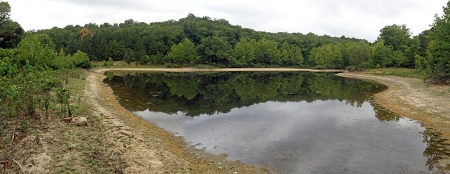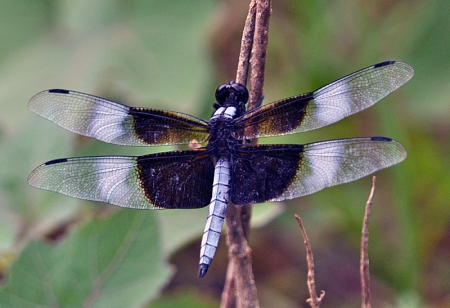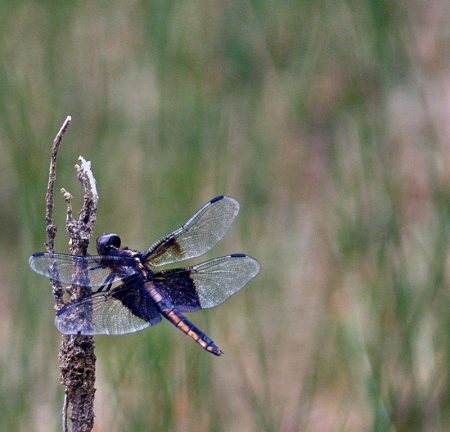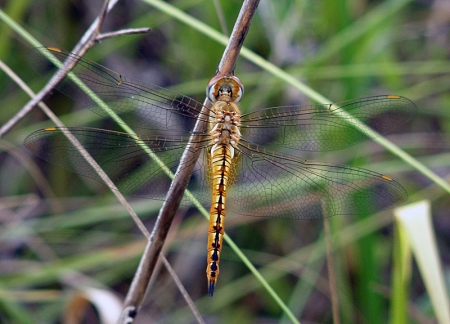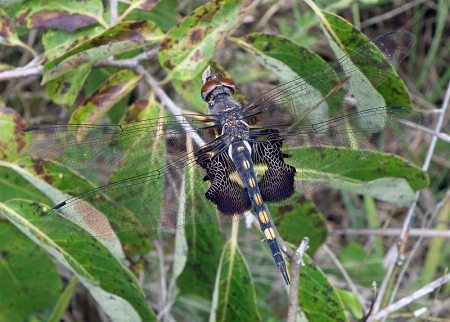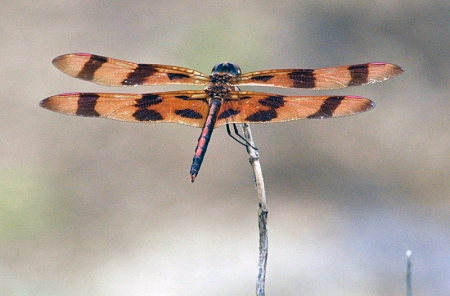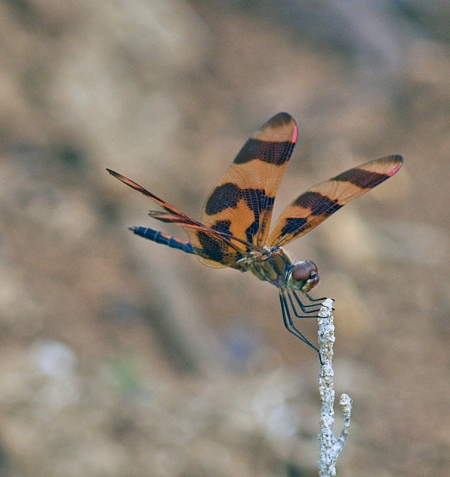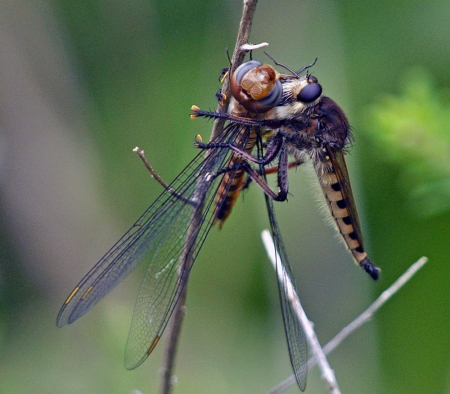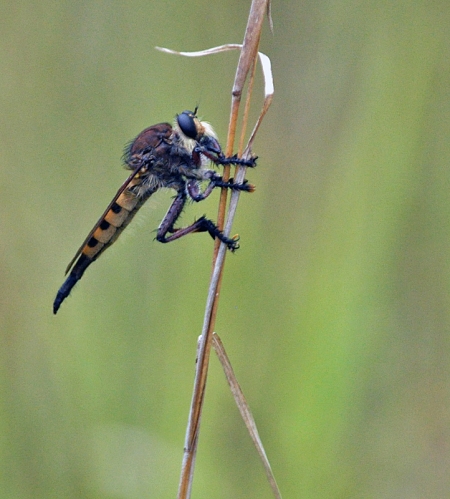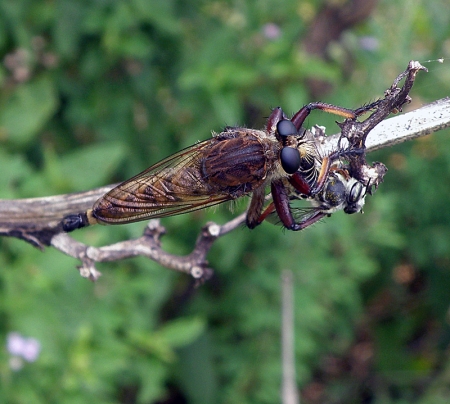Having survived my encounter with the tree described in my last post, I drove on down to the lake. Lofton Lake is located just past the end of M Highway about 8 miles north of Van Buren and within the boundary of the park (ONSR.) At normal levels, the lake is roughly 5 acres but with the lack of rain, it’s currently nowhere near that size.
The low water level did have it’s benefits — I was able to easily walk the entire perimeter of the lake without having to fight the brush. I was looking for birds, but knew that if that didn’t work out, there would almost certainly be dragonflies to keep me busy. Sadly, the birds hadn’t gotten the memo to show up and pose for me. The only species that showed themselves were a Northern Parula that stayed just out of camera range and a Belted Kingfisher that flew overhead without stopping. A single White-eyed Vireo and a group of American Goldfinches announced their presence, but stayed out of site. So it was time for Plan B, dragonflies.
It was cloudy, which kept the temperature down, but it also put a damper on dragonfly activity and I had walked around the upper half of the lake before seeing any. Once the first one showed though, things began to pick up. First was a male Widow Skimmer (Libellula luctuosa) that I chased around for fifteen minutes without managing a very good photo.
A female turned up shortly thereafter and she was even less cooperative.
Along the dam was the hotspot. A swarm of Wandering Gliders (Pantala flavescens,) with a few Black Saddlebags (Tramea lacerata) mixed in, were cruising back and forth all along the length of the dam and out onto the open overflow area to the south.
A few Halloween Pennants (Celithemis eponina) completed the menagerie.
I was especially pleased to get the photos of the Wandering Glider and Black Saddlebags. Both of those species seem to stay on the wing all the time and finding one perched is something of a rare opportunity.
At one point, standing on the dam with dragonflies skimming back and forth, a loud buzzing noise coming from the buttonbush caught my attention. I turned to look just in time to see a dark shape smash into one of the Wandering Gliders, attacker and victim both crashing to the ground in a great fluttering tangle of wings. I tried desperately to get the camera on the commotion, but my reaction time was too slow. The mysterious attacker was quickly in the air again, this time carrying the now deceased dragonfly and headed back into the buttonbush thicket. There was no way I was not going to find out who had so dramatically just taken a dragonfly on the wing, so into the brush and briars I went, shorts and bare legs be damned. A few seconds later and I’m looking at this scene:
The perpetrator was a very large robber fly, one of nearly a dozen seen during my three hours at the lake. I had no idea that a robber fly could possibly prey on a dragonfly, other than maybe the smallest species and certainly not in the manner I had just witnessed. A little research and the dragon slayer was revealed to be a Hine’s Giant Robber Fly (Promachus hinei.) The individual in the photo is a male, but females are easily distinguished by the differing abdominal segments:
Unfortunately, I could find very little life history information on P. hinei other than the fact that they tend to be very bold and will catch and eat nearly anything..
including bees and, as we happen to know firsthand, dragonflies.
And based on the number of photos on the web depicting them with captured dragonflies. it’s a very common occurrence. A fly that regularly kills and eats dragonflies — who’d a thunk it? That’s the coolest thing I’ve seen in a while and if you don’t agree, you can kiss my hinei.
